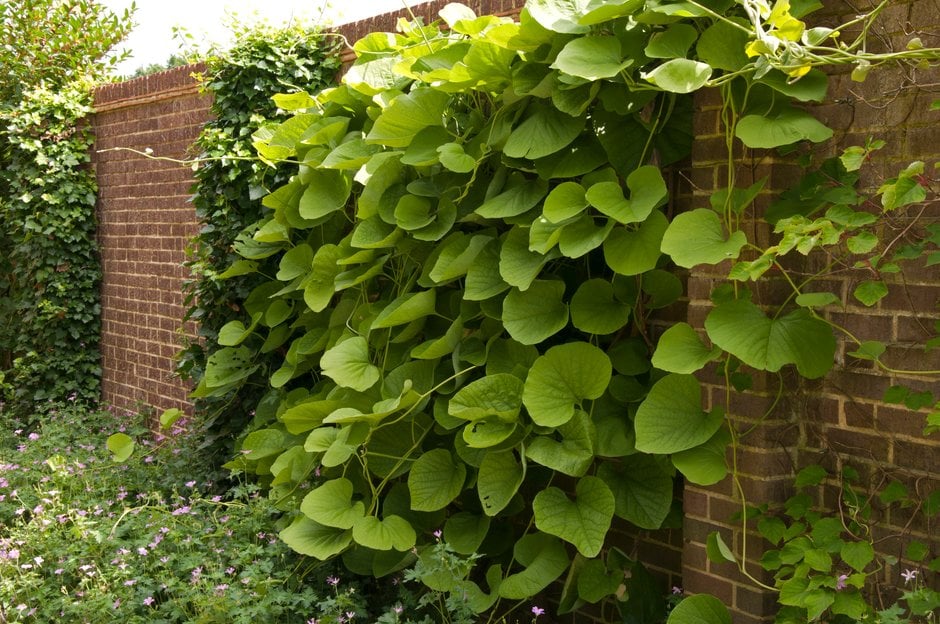Aristolochia manshuriensis
Manchurian Dutchman's pipe
A deciduous, woody-stemmed, twining climber with large, pale green, heart-shaped leaves up to 30cm long. Flowers are borne singly or in pairs in the leaf axils in summer and are a creamy-white colour densely mottled with yellow and green

Buy this plant
Size
Ultimate height
4–8 metresTime to ultimate height
5–10 yearsUltimate spread
1.5–2.5 metresGrowing conditions
Moisture
Moist but well–drained, Well–drainedpH
Acid, Alkaline, NeutralColour & scent
| Stem | Flower | Foliage | Fruit | |
| Spring | Green | |||
|---|---|---|---|---|
| Summer | Cream White Yellow Green | Green | ||
| Autumn | Green | |||
| Winter |
Position
- Full sun
- Partial shade
Aspect
South–facing or West–facing
Exposure
Sheltered Hardiness
H4Botanical details
- Family
- Aristolochiaceae
- Native to GB / Ireland
- No
- Foliage
- Deciduous
- Habit
- Climbing
- Potentially harmful
- TOXIC if eaten. Wear gloves and other protective equipment when handling Pets (dogs): TOXIC if eaten - see the HTA guide to potentially harmful plants for further information and useful contact numbers
- Genus
Aristolochia can be shrubs or herbaceous perennials, many climbing, usually with heart-shaped or ovate leaves. Distinctive flowers have an S-shaped calyx tube and no petals, and are may be white, yellow, brown or maroon, often mottled
- Name status
Correct
- Plant range
- Manchuria Korea
How to grow
Cultivation
Grow in a moist, well drained, moderately fertile soil in full sun to part shade in a sheltered location; provide strong support. See staking perennials for further information
Propagation
Propagate by seed or from softwood cuttings
Suggested planting locations and garden types
- Wall side borders
Pruning
Pests
Generally pest-free
Diseases
May be susceptible to honey fungus in gardens where it is present but insufficient data to determine degree of susceptibility
Get involved
The Royal Horticultural Society is the UK’s leading gardening charity. We aim to enrich everyone’s life through plants, and make the UK a greener and more beautiful place.